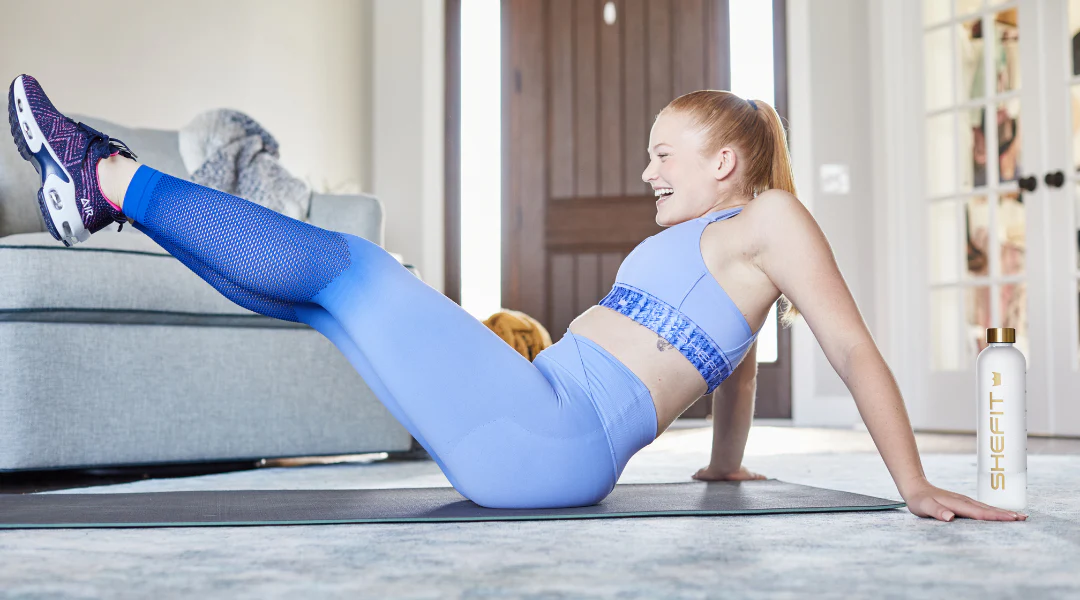Pilates has recently exploded in popularity among fitness enthusiasts as a method to enhance flexibility, core strength, posture, and self-awareness. All fitness levels can benefit from Pilates’ balanced workout because of its emphasis on controlled movements, breathing methods, and correct alignment.
Nonetheless, the question of whether to perform Pilates at home with a professional instructor or in a studio with other people is becoming more and more contentious as the practice gains traction. Is there a clear winner between the two choices in terms of output quality?
If you want to know how to get in shape the most effective way, this article will go over the pros and cons of each method.
The Benefits of Practicing Pilates in a Studio
1. Professional Instruction
Going to a Pilates studio gives you access to expert teaching, which is a major perk. Instructors who have completed the Pilates training program can show you how to do each exercise with the proper form, alignment, and breathing techniques to keep you safe and get the most out of your workout.
To learn the basics of Pilates and avoid injuries, this instruction is essential for beginners. A skilled teacher may help even the most seasoned practitioners by tailoring their instruction to each student’s needs, presenting novel obstacles, and halting the gradual onset of harmful habits.
2. Access to Specialized Equipment
Pilates equipment like reformers, Wunda chairs, and barrels is readily available in many studios, which is great because it allows clients to work out in a setting that may be too crowded or too expensive to do at home. You can improve your workout and reach more muscles with the help of this equipment than with only a mat and some resistance.
The dynamic resistance used in reformer Pilates, for instance, can facilitate the development of lean muscle mass and enhanced range of motion. Having this type of specialist gear at your disposal opens up more options for your workout and could even speed up your results.
3. Accountability and Motivation
Going to a studio class every week will help you stay consistent, which is key if you want to reach your fitness objectives in the long run. A sense of belonging, responsibility, and support may all blossom when people participate in group activities. Pilates in a group setting has the potential to be an uplifting experience that inspires you to give your class your all.
Also, because you’ve already committed to taking the class, you’re less likely to back out at the last minute.
4. Variety in Class Offerings
Classes at pilates studios usually range from beginner to advanced, accommodating a wide range of fitness objectives. There is a wide range of reformer classes available, from those for complete beginners to those for more advanced practitioners, as well as specialized programs such as pregnancy Pilates and Pilates for athletes.
With so many different options, you won’t get bored and will be more invested in your practice. To keep things interesting and avoid training plateaus, instructors often switch up workouts.
The Drawbacks of Studio Pilates
1. Cost
The high price tag is a major drawback of Pilates in a studio. Private and group lessons, particularly at upscale studios, can be somewhat pricy. Pilates studio subscriptions or drop-in fees can go up quickly depending on your location and class frequency. Some people might not be able to afford this, especially if they want to do Pilates many times a week.
2. Limited Flexibility
Having to fit Pilates sessions into the studio’s schedule is another drawback of studio Pilates. Finding convenient class times can be challenging if your job schedule is variable or if you have a hectic lifestyle. It could be inconvenient for some people to spend more time getting to and from the studio.
The Benefits of At-Home Pilates Practice
1. Convenience and Flexibility
Convenience is a major selling point of doing Pilates exercises at home. Without the need to commit to a specific class schedule or travel time to a studio, you can exercise whenever it is most convenient for you. This adaptability allows Pilates to be included in even the busiest of schedules.
Pilates exercises for all skill levels are readily available online in the form of videos and apps. Making it easy to remain consistent, there is an exercise to fit your needs, whether you have 10 minutes or an hour.
2. Cost-Effective
Compared to Pilates studio sessions, doing exercises at home is far less expensive. Just make sure you have a mat, some open space, and maybe some resistance bands or little weights. Pilates doesn’t have to be expensive if you take advantage of the many online platforms that provide classes for free or at a minimal cost.
It may be possible to save money over several months of studio instruction by investing in a reformer or other home practice equipment.
3. Personalization and Privacy
When you do Pilates at home, you may tailor your program to your specific needs, interests, and objectives. Class length, difficulty level, and instructor are all up to you. You are not obligated to do a workout or adjustment if you find that it does not fit you.
Pilates at home provides the ideal environment for those who have social anxiety when exercising in a group. You won’t have to pay attention to your appearance or compare yourself to others; you can just concentrate on moving.
The Drawbacks of At-Home Pilates Practice
1. Lack of Professional Guidance
Lack of direct professional instruction is a major drawback of doing Pilates exercises at home. You run the risk of injuring yourself or getting less out of your workouts if you don’t have an instructor to give you feedback and fix your form. Without proper guidance, Pilates may be difficult for anyone, but especially beginners.
Online lessons do provide some direction, but they can’t compare to the one-on-one attention you’d get in a traditional studio.
2. Limited Equipment
Unless you have access to specialized equipment like reformers or barrels, practicing mat Pilates at home could be a challenge, even though it can be incredibly beneficial. If you’re looking to get more out of your workout than you could with just bodyweight exercises, these machines may be the way to go.
It is feasible to purchase home equipment, but doing so can be rather costly and necessitate a significant amount of room.
Which Offers Better Results?
In the end, it’s up to you to decide whether you want to work out at a studio or home with Pilates. The most effective routine is the one that keeps you interested, committed, and regular. Finding and maintaining your ideal Pilates practice is more crucial than the method you employ, whether it’s a studio or a home program.
Keep an eye for more latest news & updates on Web of Buzz!




